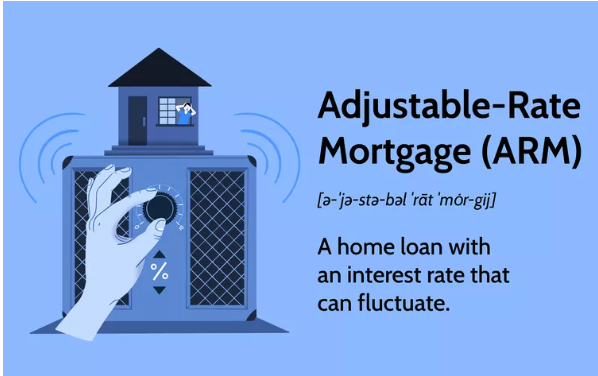Adjustable-Rate Mortgages: Are They Worth the Risk?
When shopping for a mortgage, you’ll likely come across two main types: fixed-rate and adjustable-rate mortgages (ARMs). While fixed-rate loans offer stability, ARMs can tempt borrowers with lower initial rates. But are they worth the risk?
In this post, we’ll break down how adjustable-rate mortgages work, who they’re best suited for, and whether the potential savings outweigh the uncertainty.
What Is an Adjustable-Rate Mortgage (ARM)?
An adjustable-rate mortgage is a home loan where the interest rate can change over time. Typically, it starts with a fixed interest rate for an initial period (e.g., 5, 7, or 10 years), then adjusts periodically based on a market index.
Example:
A 5/1 ARM means:
-
Fixed interest rate for the first 5 years
-
Adjusts every 1 year after that
The rate adjustment is usually tied to an index (like the SOFR or LIBOR) plus a lender’s margin.
✅ Potential Advantages of ARMs
1. Lower Initial Interest Rates
The biggest benefit is the introductory rate, which is often lower than that of fixed-rate mortgages—sometimes by a full percentage point or more.
🧮 Savings Example:
If a 30-year fixed mortgage is 7%, and a 5/1 ARM starts at 5.5%, you could save thousands in interest during the first few years.
2. Lower Monthly Payments (Initially)
Because of the lower starting rate, your initial monthly payment will be lower—freeing up cash for savings, investments, or renovations.
3. Good Option for Short-Term Homeowners
If you plan to move or refinance before the fixed period ends, you may never experience a rate adjustment—making an ARM a cost-effective choice.
⚠️ The Risks of ARMs
1. Interest Rate Uncertainty
Once the fixed period ends, your rate—and payment—can increase significantly, depending on market conditions.
📉 If rates rise sharply, your mortgage payment could jump hundreds of dollars a month, putting pressure on your budget.
2. Payment Shock
Without careful planning, homeowners may be hit with “payment shock” when their ARM adjusts for the first time, especially if they’re not prepared for the change.
3. Refinancing Risks
Refinancing before your rate adjusts can be smart, but it’s not always guaranteed:
-
You might not qualify if your credit score drops
-
The home may lose value
-
Interest rates could be higher than expected
🏠 When Does an ARM Make Sense?
An ARM might be a good fit if:
-
You plan to sell or refinance within 3–10 years
-
You expect your income to rise significantly
-
You can handle potential payment increases
-
You want to invest the monthly savings elsewhere for a higher return
🔍 Key Terms to Understand
When considering an ARM, pay attention to:
-
Initial Rate: The starting interest rate
-
Adjustment Period: How often the rate can change after the fixed period
-
Index: The benchmark interest rate used for adjustments
-
Margin: A set percentage added to the index by the lender
-
Rate Caps: Limits on how much the interest rate can increase (yearly and over the life of the loan)
Example Cap Structure:
5/1 ARM with 2/2/5 caps means:
-
Max 2% increase on the first adjustment
-
Max 2% increase per subsequent year
-
Max 5% increase over the life of the loan
🧠 Final Thoughts: Are ARMs Worth the Risk?
Adjustable-rate mortgages can offer real savings for certain buyers—especially those with a solid exit plan, stable income, and high risk tolerance. But they aren’t for everyone.
If you prefer certainty and stability, a fixed-rate mortgage may be the better path. However, if you’re financially disciplined and willing to play the long game, an ARM can be a strategic wealth-building tool.


